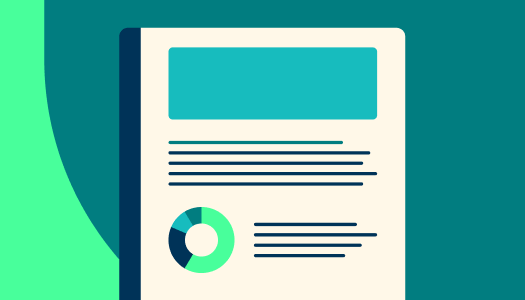How to use Predictive, Descriptive, and Prescriptive Analytics for Data-Driven Decisions
Business analytics are the systematic exploration, interpretation, and utilization of data to uncover valuable insights that drive informed decision-making within an organization. In an era of data proliferation, businesses are inundated with a vast amount of information from customer interactions, sales figures, operational metrics, and market trends.
Business analytics distills patterns, correlations, and trends that guide smarter operations, improvements, and resource allocations. Particularly in sectors characterized by intricate asset and facility portfolios, such as real estate, infrastructure, and manufacturing, the role of business analytics becomes paramount. These businesses grapple with multifaceted operational challenges, making it essential to adopt smarter operations and data-driven approaches to steer future strategies and accurately assess funding requirements. In this context, business analytics is the compass that guides these enterprises toward more efficient, effective decision-making in a dynamic and competitive landscape.
There are three types of business analytics: descriptive, predictive, and prescriptive analytics.
Descriptive analytics: insights about the past
While each type of analytics is measured separately, they work together to provide a holistic view of your business’s performance. Descriptive analytics provides a foundation for contextual insights by examining historical data to understand past events and patterns. Prescriptive suggests optimal courses of action based on these insights. Predictive analytics leverages advanced modeling techniques to forecast future outcomes, enabling proactive decision-making.
What is descriptive analytics?
Descriptive analytics focuses on exploring and interpreting historical data to provide a comprehensive understanding of past events and trends. By examining the past, organizations gain insights into their previous performance, customer behaviors, and market dynamics.
Descriptive analytics allows businesses to answer questions about what has happened, offering valuable decision-making context. It forms the basis for identifying data patterns, trends, and anomalies, enabling companies to assess the effectiveness of past strategies and operations.
Techniques used in descriptive analytics
Extracting meaningful insights from historical data can be done in a few different ways. Each of these methods offers its own type of insights:
- Data Aggregation: Gathering and summarizing large volumes of data to provide a high-level overview of trends and patterns.
- Data Visualization: Representing data through charts, graphs, and dashboards to make complex information more easily understandable and actionable.
- Key Performance Indicators (KPIs): Defining and tracking essential metrics that measure the performance of specific areas within an organization.
- Trend Analysis: Identifying patterns and tendencies in data over time, helping businesses recognize cyclical patterns or shifts in behavior.
- Heat Maps: Visual representations that use color gradients to highlight areas of higher or lower concentration within a dataset.
- Comparative Analysis: Contrasting data points to discern differences and similarities between elements, aiding in benchmarking and identifying outliers.
These techniques collectively enable organizations to gain a clear retrospective view of their operations, fostering better comprehension of historical performance and paving the way for informed decision-making.
Descriptive analytics use cases
Descriptive analytics helps businesses gain a solid understanding of their historical performance and operational trends. This approach is ideal for organizations aiming to evaluate the effectiveness of past strategies, identify patterns in customer behavior, and assess overall business performance over a specific period.
For instance, a retail company preparing for a new product launch may use descriptive analytics to analyze historical sales data, customer purchasing patterns, and promotional campaign results. This allows them to gauge the success of previous launches, determine peak buying periods, and identify which marketing strategies yielded the best results. These insights guide the company in devising more effective launch strategies, optimizing promotional efforts, and allocating resources more efficiently based on past trends.
Predictive analytics: forecasting future outcomes
Organizations use predictive analytics to identify patterns and relationships within data, offering insights into what may happen in certain situations. This enables businesses to make proactive decisions and strategic adjustments, even making room for data-supported calculated risks in certain scenarios.
What is predictive analytics?
Predictive analytics uses historical data and statistical algorithms to forecast future outcomes and trends. This technique empowers organizations to anticipate customer behaviors, market trends, and potential business risks, ultimately enhancing their ability to plan ahead and seize opportunities before they arise. Predictive analytics transforms historical data into a powerful tool for guiding future actions and strategies.
Techniques used in descriptive analytics
Predictive analytics encompasses a variety of techniques designed to anticipate future trends and outcomes, including:
- Regression Analysis: Identifying relationships between variables to make predictions based on historical data.
- Time Series Analysis: Analyzing data collected over time to forecast future values and trends.
- Machine Learning Algorithms: Using algorithms to train models on historical data, allowing them to make predictions on new data.
- Classification Models: Categorizing data into predefined classes to predict the likelihood of future events.
- Forecasting Models: Using statistical methods to predict future values, such as sales, demand, or stock prices.
- Data Mining: Uncovering hidden patterns in large datasets to predict future behaviors and trends.
- Churn Analysis: Predicting customer churn by analyzing factors that contribute to customer attrition.
These predictive techniques enable businesses to anticipate changes in factors such as market demand and customer preferences, facilitating well-informed decision-making and a proactive approach to strategy development.
Predictive analytics use cases
Predictive analytics is particularly valuable for businesses when they want to stay ahead of future trends, behaviors, and outcomes. This approach is most effective when organizations aim to optimize resource allocation, minimize risks, and capitalize on emerging opportunities.
For instance, an e-commerce company gearing up for the holiday season can employ predictive analytics to analyze historical sales data, customer behaviors, and market trends. This enables them to forecast which products will be in high demand, determine optimal pricing strategies, and anticipate fluctuations in website traffic.
Armed with these insights, the company can strategically adjust inventory levels, allocate marketing budgets, and optimize staffing to meet customer demands effectively. Predictive analytics empowers businesses to stay ahead of market dynamics so they can respond proactively and take decisive actions that drive success.
Prescriptive analytics: providing actionable recommendations
Prescriptive analytics transforms data-driven insights into actionable strategies, bridging the gap between knowledge and effective decision-making. More than simply identifying what might happen or why it happened, prescriptive analytics offers explicit guidance on what actions to take to capitalize on opportunities, mitigate risks, and optimize results.
What is prescriptive analytics?
Prescriptive analytics goes beyond predicting future outcomes to recommend optimal courses of action. By combining historical data, predictive models, and business rules, prescriptive analytics provides actionable insights that guide decision-makers toward the most advantageous choices.
Techniques used in prescriptive analytics
Prescriptive analytics uses techniques aimed at creating actionable recommendations for strategic optimization. These techniques include:
- Optimization Algorithms: Identifying the best possible solutions from a set of alternatives by considering constraints and objectives.
- Simulation Models: Creating virtual scenarios to simulate the outcomes of different decisions and assess their potential impacts.
- Decision Trees: Mapping out potential decision paths and their outcomes to guide choices in different scenarios.
- Heuristic Approaches: Using rules of thumb or guidelines to make decisions in situations where an optimal solution may be unclear.
- Scenario Analysis: Evaluating multiple potential scenarios and their implications to make informed decisions under uncertainty.
- Prescriptive Machine Learning: Combining predictive models with optimization techniques to recommend actions that align with desired outcomes.
These techniques empower organizations to not only understand what can happen in certain circumstances but to make informed decisions that lead to desired results. Prescriptive analytics provides actionable insights that assist businesses in optimizing their strategies, resource allocation, and operations to achieve their goals more effectively.
Prescriptive analytics use cases
Prescriptive analytics is most valuable for businesses when they are seeking to predict future outcomes and determine the best course of action to achieve specific objectives. When organizations need to optimize complex decisions, allocate resources strategically, and navigate intricate scenarios with multiple variables.
For instance, a logistics company managing a fleet of delivery vehicles can use prescriptive analytics to analyze historical data, current traffic conditions, weather forecasts, and delivery deadlines. This enables them to recommend the most efficient delivery routes for each vehicle in real time, considering variables such as traffic congestion and delivery priorities.
The company can also adjust routes on the fly to account for unexpected delays or changes in the delivery schedule. Prescriptive analytics empowers businesses to make decisions that maximize efficiency, reduce costs, and enhance customer satisfaction by offering actionable insights that drive operational excellence.
Choosing the right analytics approach for your business
When selecting the appropriate analytics types for your business, several factors come into play to ensure the most effective decision-making approach. Consider the following:
- Business Objectives: Define your goals and what you aim to achieve with analytics. Are you seeking to understand historical performance, predict future trends, or optimize decisions?
- Data Availability and Quality: Assess the quality and quantity of your available data. Different analytics types require varying amounts and levels of data accuracy.
- Time Horizon: Determine whether you're focusing on short-term or long-term insights. Descriptive analytics is retrospective, predictive analytics looks to the near future, and prescriptive analytics guides immediate decisions.
- Complexity of Decisions: If decisions involve intricate variables and constraints, prescriptive analytics might be necessary for recommending optimal courses of action.
- Resource Constraints: Consider the resources—financial, technological, and human—that you can allocate to analytics efforts.
- Industry and Use Case: Different industries and use cases have specific needs. For example, healthcare might require predictive analytics to forecast patient volumes, while manufacturing might use prescriptive analytics to optimize supply chain operations.
- Competitive Landscape: Assess how your competitors are using analytics. Having A strong CMMS or capital planning software can give you a competitive edge against competitors managing resources in more manual ways.
- Organizational Readiness: Evaluate your organization's readiness to adopt advanced analytics techniques, including technological infrastructure and analytical skills.
- Cost-Benefit Analysis: Consider the potential benefits of each analytics type against the costs of implementation and resource allocation.
- Regulatory and Ethical Considerations: Ensure that the analytics approach aligns with regulations and ethical standards, especially when dealing with sensitive data.
- Feedback Loop: Consider how the insights generated by analytics will be incorporated back into your decision-making process.
Weighing all the options will help you make an informed decision on which analytics approaches best aligns with your objectives, resources, and decision-making needs. Depending on your organization’s needs, you may choose to employ a combination of descriptive, predictive, and prescriptive analytics.
Make the most of your data with Brightly
Making data-driven decisions is key to making the most of your business opportunities. Brightly’s software solutions can help your organization create an analytics strategy that can take it to the next level. Speak with a Brightly expert to see which solution can help you make the most of your data.




